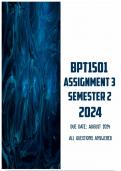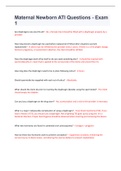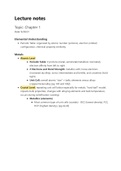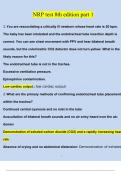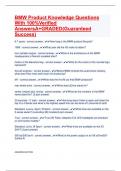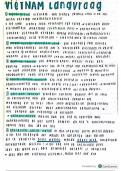Exam (elaborations)
BPT1501 Assignment 3 Semester 2 2024 | Due August 2024
- Institution
- University Of South Africa (Unisa)
BPT1501 Assignment 3 Semester 2 2024 | Due August 2024. All questions answered. INSTRUCTIONS 1. Read the following passage and then respond to the questions based on the given passage. 2. DON’T FORGET TO SIGN YOUR DECLARATION FORM. Green Valley High School is located in a rural area with ...
[Show more]
